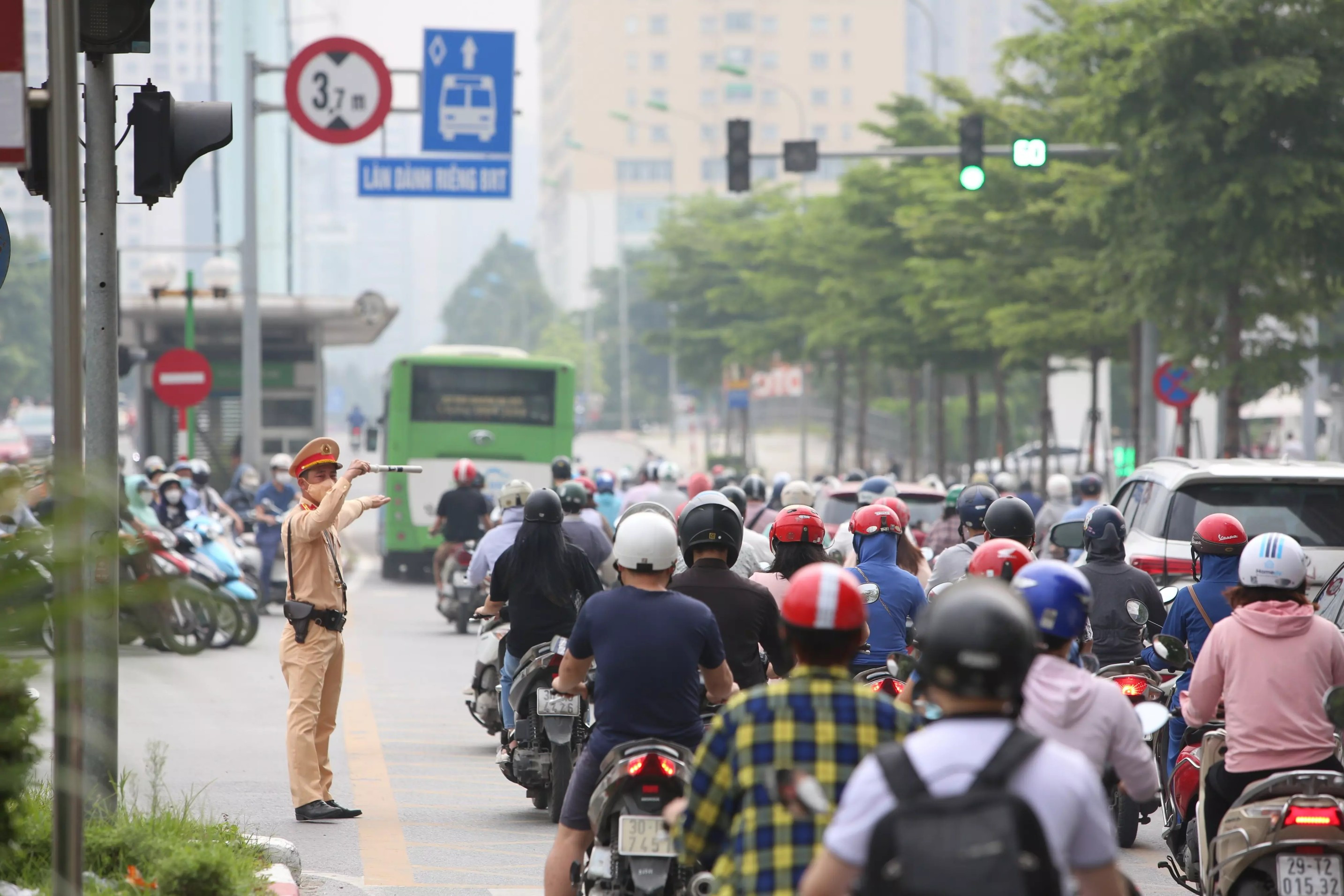
The BRT 01 route, from Kim Ma to Yen Nghia, has a total length of 14 kilometers and goes through streets with the highest traffic density such as Giang Vo, Lang Ha, Le Van Luong, To Huu, Quang Trung and Le Trong Tan.
In rush hours in the morning and afternoon, the streets usually see traffic congestion, which makes it impossible for BRT to go as fast as expected, even though there is a specific lane reserved for BRT. In some cases, BRT even makes congestion more serious.
Nguyen Minh from Ha Dong district, who rides a motorbike to work every day, noted that traffic is congested partially because of BRT. As private vehicles are only allowed to use two lanes while the remaining lane is reserved for BRT, serious congestion is understandable.
“This happens every day. The lanes for private cars are jammed, while the lane for BRT is empty as there is only one bus every 5-10 minutes. No one dare enter the lane for BRT,” she said.
“The reserving of one lane for BRT is causing a waste of traffic infrastructure and it cannot bring the desired effects,” she said.
Tran Quoc Viet from Dong Da district said he was once fined for entering the BRT lane on Le Van Luong Street. He proposed that Hanoi authorities reconsider whether it is necessary to reserve a lane for buses.
“During rush hours, many motorbikes encroach upon the lane reserved for BRT. Car drivers ate fined for this, but motorbikes, in many cases, are not,” Viet explained.
Le Tan from Ha Dong District noted that the police would impose fines on cars which enter BRT lane, but wouldn’t impose fines on motorbikes because there are numerous violators. Policemen sometimes allow motorbikes to enter BRT route to ease traffic congestion.
Traffic expert Nguyen Xuan Thuy said that once a policy does not work effectively, it needs reconsideration. BRT is one of such policies. BRT works well in other countries because the roads are wide and there are not many private vehicles like in Vietnam.
A source said that the Hanoi People’s Committee has requested relevant agencies to assess the efficiency of BRT policy after hearing people complains about it.
Gia Van - Dinh Hieu